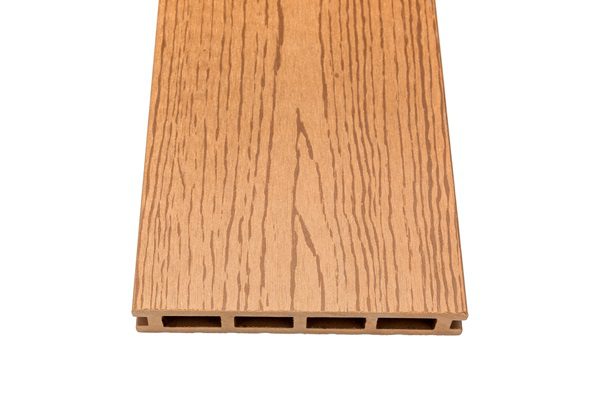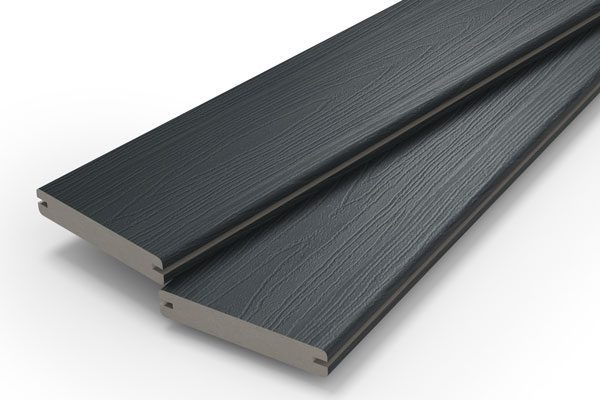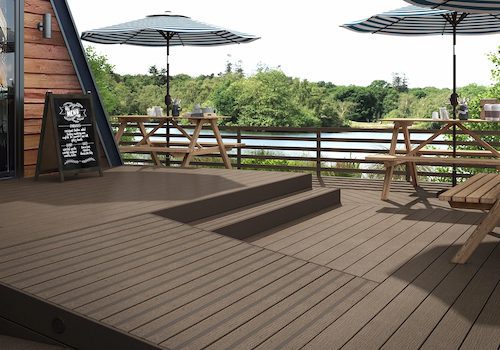When choosing new composite decking it is important to consider what is below the surface, as the composition of your decking may impact its longevity, durability, and aesthetics.
There are two main types of composite deck board available, hollow and solid.
What is hollow composite decking?
Hollow composite decking is exactly that – a composite decking board which is hollow in its centre.

What is solid composite decking?
A solid composite decking board is a deck board which has no hollow centre and is completely solid all the way through.

Hollow vs solid composite decking – what is the difference?
The main difference between these two different types of composite decking, is their construction. Both options, solid and hollow deck boards, have their advantages and disadvantages and it is important to consider all the facts before making a final decision.

Advantages of hollow composite decking
Due to their composition and the need to use less material, hollow deck boards are often cheaper to produce than their solid counterparts. This means they can be less expensive to buy. They are also lighter than solid composite deck boards, making them easier to manoeuvre and install – or replace.
Disadvantages of hollow composite decking
However, before you think you are getting a good deal by buying hollow, there are several other factors that should also be considered:
- Hollow boards can hold moisture and water internally, which is very difficult to remove and will increase the decomposition of the board compared to a solid alternative.
- Hollow boards have unsightly ends which require the use of end caps; these end caps are made of a different material and will weather differently from the rest of the board.
- Hollow boards are less resistant to impact damage due to their reduced wall thickness, so big parties on a hollow deck could result in a lot of damaged boards!
Advantages of solid composite decking
Solid composite decking is exactly that, solid. It contains more material than hollow decking, which makes it slightly more expensive to manufacturer than hollow alternatives. However, this solidity has its advantages.
- Solid boards do not retain moisture at their core, which helps keep the structure of the board strong and stable.
- Most solid boards will have capped ends in the same material as the board, creating a clean, coordinated look.
- Solid boards are easier to screw into as they will not collapse as the screw drives into the board, as would a hollow board. To get around this, hollow manufacturers will often resort to a much more expensive hidden clip system, which does not offer the same fastening strength as a stainless steel screw.
- Solid composite boards offer better noise absorption properties than hollow decking, making it quieter to walk on.
- Solid composite boards are designed to last, and as such many will come with a long warranty, providing peace of mind that you have chosen a quality product that will endure.If you are still unsure as to which type of decking is most suitable for you, or if you have further questions about the many advantages of solid decking, call our friendly team today on 01978 667 840 for a no obligation chat.
